Arctic-Grade Innovation: Temporary Prefab Buildings Feature Lida Group’s Insulated Sandwich Panels for Extreme Mobile Housing
2025-Aug-05 17:50:41
By Admin
1. Introduction
The Arctic region, with its extreme cold, harsh winds, and challenging terrain, presents unique and formidable obstacles for human habitation and infrastructure development. From scientific research stations and mining operations to emergency response efforts and military outposts, there is a constant demand for temporary housing solutions that can withstand the region’s unforgiving conditions. Traditional construction methods often fall short in such environments, struggling with issues like slow assembly, poor insulation, and inability to resist extreme weather.
In this context, Lida Group has emerged as a pioneer with its Arctic-grade temporary prefab buildings, which incorporate advanced insulated sandwich panels. These structures are specifically engineered to meet the demands of extreme mobile housing in the Arctic, offering a combination of durability, energy efficiency, and rapid deployment that is unparalleled in the industry. This article explores the features, benefits, applications, and impact of Lida Group’s innovative solution in the extreme Arctic environment.
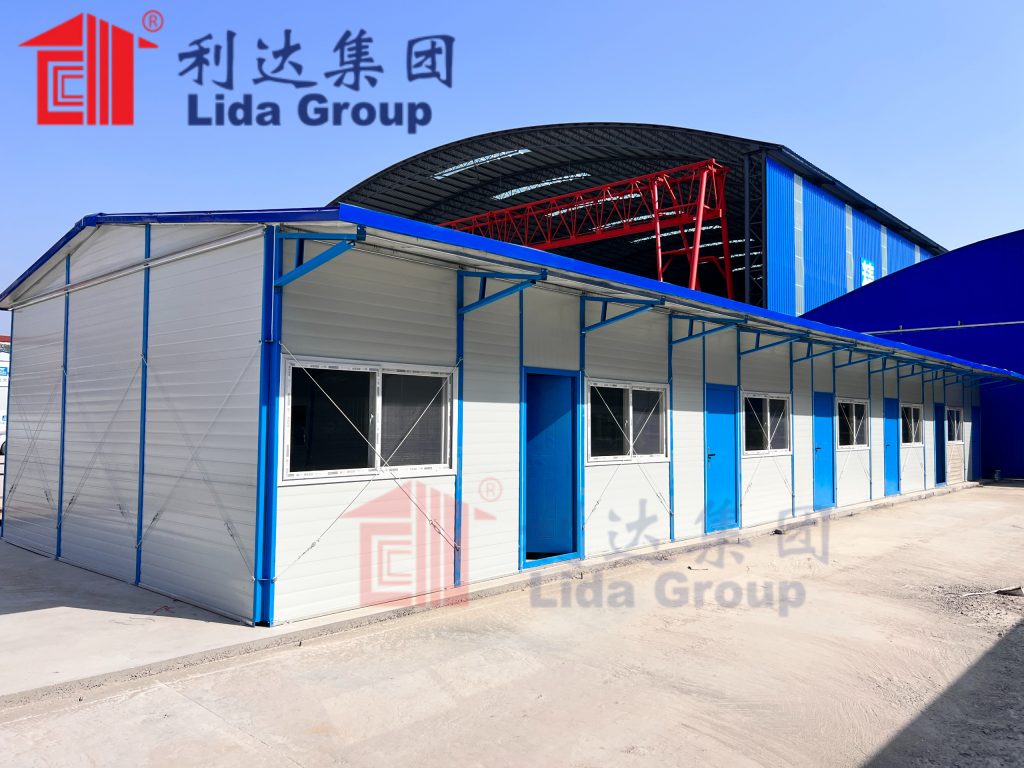
2. The Unique Challenges of Arctic Housing
2.1 Extreme Temperature Conditions
The Arctic is characterized by extremely low temperatures, often dropping well below -40°C (-40°F) during the winter months. Such frigid conditions pose significant challenges for housing. Traditional buildings with inadequate insulation lose heat rapidly, leading to high energy consumption for heating. Moreover, extreme cold can cause materials to become brittle, leading to structural damage over time. Pipes and plumbing systems are also at risk of freezing and bursting, disrupting essential services.
The human body struggles to maintain core temperature in such environments, making proper insulation and heating not just a matter of comfort but of survival. Any failure in the building’s thermal performance can have severe consequences for the occupants’ health and safety.
2.2 Harsh Weather Events
Arctic regions are prone to violent storms, including blizzards with high winds that can exceed 100 km/h (62 mph). These storms carry large amounts of snow, which can accumulate quickly, putting immense pressure on building roofs and structures. Strong winds can also cause wind chill, further lowering the effective temperature and increasing heat loss from buildings.
In addition, the region experiences prolonged periods of darkness in winter and continuous daylight in summer, which can affect the performance of building materials. For example, the extreme temperature fluctuations between day and night in some Arctic areas can cause materials to expand and contract, leading to cracks and reduced structural integrity.
2.3 Remote and Inaccessible Locations
Most Arctic areas are remote, with limited or no existing infrastructure such as roads, ports, or electricity grids. This makes transporting building materials and equipment to these locations extremely difficult and costly. Traditional construction methods, which rely on on-site fabrication and a steady supply of materials, are impractical in such settings.
The lack of local labor and resources further complicates construction efforts. Any housing solution must be lightweight, easy to transport, and capable of being assembled with minimal specialized equipment and personnel.
2.4 Permafrost Considerations
Much of the Arctic is built on permafrost, a layer of soil that remains frozen for at least two consecutive years. Building on permafrost requires careful consideration, as heat from the building can cause the permafrost to thaw, leading to ground settlement and structural instability. Traditional foundations can disrupt the permafrost layer, resulting in uneven subsidence and damage to the building.
Housing solutions in the Arctic must therefore be designed to minimize heat transfer to the ground and prevent permafrost thaw. This requires innovative foundation designs and insulation strategies.
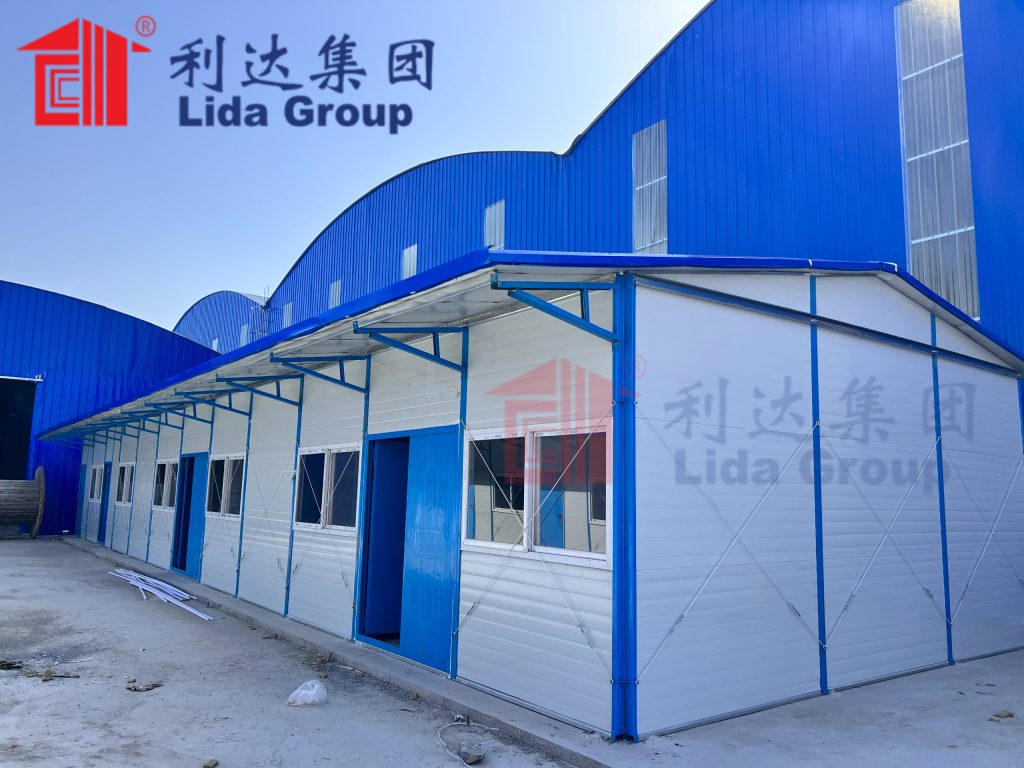
3. Lida Group’s Insulated Sandwich Panels: Technology and Composition
3.1 Core Materials and Their Insulating Properties
Lida Group’s insulated sandwich panels are the cornerstone of their Arctic-grade temporary prefab buildings. These panels consist of three layers: two outer facing materials and a core insulation layer. The core material is carefully selected for its exceptional insulating properties, with options including polyurethane foam (PU), extruded polystyrene (XPS), and rock wool.
Polyurethane foam offers excellent thermal resistance, with a high R-value (a measure of insulation effectiveness), making it ideal for extreme cold environments. It also has good structural strength and is resistant to moisture. Extruded polystyrene is another popular choice, known for its low thermal conductivity, water resistance, and durability. Rock wool, made from volcanic rock, is fire-resistant and provides good insulation, making it suitable for applications where fire safety is a priority.
The combination of these core materials with the outer facing layers creates a panel that effectively traps heat inside the building, minimizing heat loss even in the coldest Arctic temperatures.
3.2 Outer Facing Materials for Durability
The outer facing materials of the sandwich panels are chosen for their durability and ability to withstand harsh Arctic conditions. Common options include galvanized steel, aluminum, and fiber-reinforced polymer (FRP). Galvanized steel is coated with a layer of zinc, which provides excellent corrosion resistance, protecting the panel from the salty and humid Arctic air. It also offers high strength, making it resistant to wind and impact damage.
Aluminum is lightweight yet strong, with good corrosion resistance. It is often used in applications where weight is a concern, such as in mobile or temporary structures. Fiber-reinforced polymer is a composite material that is highly resistant to corrosion, UV radiation, and extreme temperatures. It is also lightweight and has good structural properties, making it a durable choice for the outer layers of the sandwich panels.
3.3 Manufacturing Process Ensuring Quality and Consistency
Lida Group employs advanced manufacturing techniques to produce their insulated sandwich panels, ensuring high quality and consistency. The panels are fabricated in controlled factory environments, where precise measurements and strict quality control standards are maintained.
The manufacturing process begins with the preparation of the outer facing materials, which are cut to the required size. The core insulation material is then applied between the two facing layers, using adhesives or mechanical fasteners to ensure a strong bond. The panels are then cured or treated to enhance their structural integrity and insulation performance.
This factory-based manufacturing process allows for precise control over the panel’s dimensions, insulation properties, and overall quality, ensuring that each panel meets the rigorous standards required for Arctic applications.
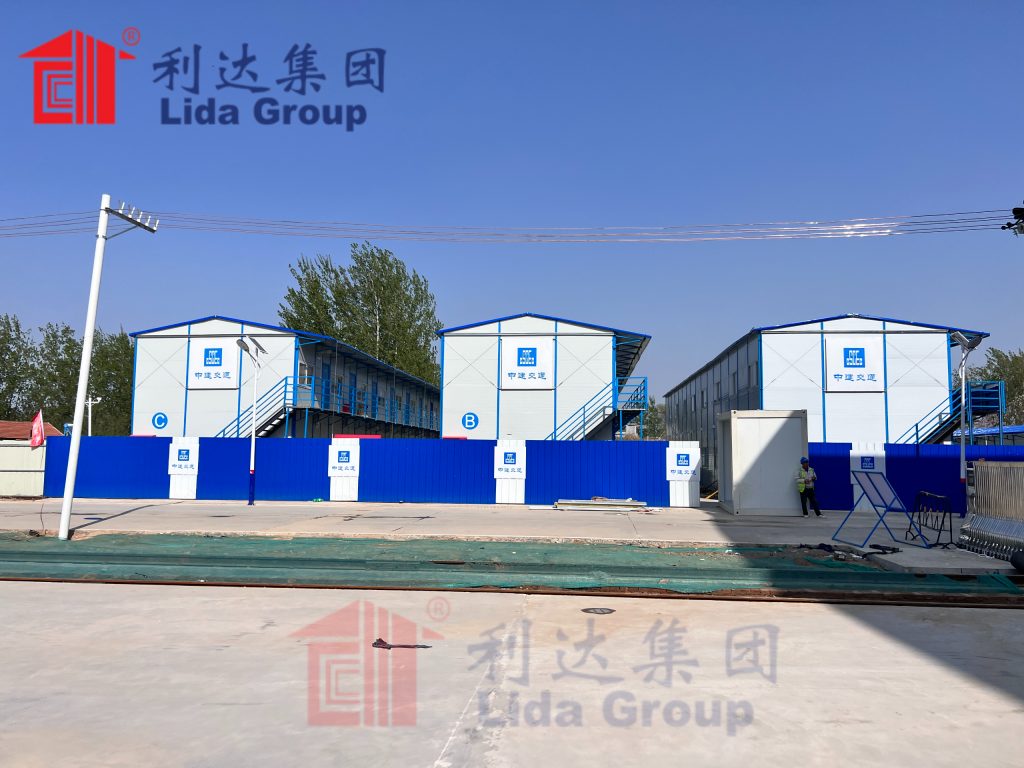
4. Features of Lida Group’s Arctic-Grade Temporary Prefab Buildings
4.1 Superior Thermal Insulation
The primary advantage of Lida Group’s Arctic-grade temporary prefab buildings is their superior thermal insulation, made possible by the insulated sandwich panels. The high R-value of the panels ensures that heat loss is minimized, even in extreme cold. This reduces the energy required for heating, making the buildings more energy-efficient and cost-effective to operate.
The tight seals and joints between the panels further enhance the thermal performance, preventing cold air infiltration and warm air leakage. This creates a stable and comfortable indoor environment, with temperatures easily maintained at a comfortable level despite the harsh conditions outside.
4.2 Wind and Snow Load Resistance
The buildings are designed to withstand the high winds and heavy snow loads common in the Arctic. The structural frame of the prefab buildings is engineered to be strong and rigid, capable of resisting wind pressures of up to 3 kPa (62.6 psf) or more. The insulated sandwich panels, with their strong outer facing materials, contribute to the overall wind resistance, preventing damage from wind-borne debris.
The roof design is also optimized to handle heavy snow loads, with a steep pitch that allows snow to slide off, reducing the weight on the structure. The panels are securely fastened to the frame, ensuring that they do not dislodge under the pressure of snow accumulation.
4.3 Rapid Deployment and Modular Design
One of the key features of Lida Group’s temporary prefab buildings is their rapid deployment capability. The modular design means that the buildings are constructed from prefabricated components that can be easily transported to remote Arctic locations and assembled on-site in a matter of days or weeks, rather than months.
The modules are designed to fit together seamlessly, with simple connection systems that require minimal specialized tools or labor. This makes them ideal for emergency response situations or projects where time is of the essence. The modular design also allows for flexibility in the size and layout of the buildings, which can be customized to meet specific needs, whether it’s a small research station or a large accommodation complex.
4.4 Resistance to Corrosion and Moisture
In the Arctic, where humidity, snow, and ice are prevalent, corrosion and moisture damage are significant risks. Lida Group’s buildings are designed to resist these threats. The outer facing materials of the sandwich panels, such as galvanized steel and FRP, are highly resistant to corrosion, ensuring that the panels remain intact and functional for years.
The panels are also designed to be water-resistant, with tight seals and joints that prevent moisture from infiltrating the building. This protects the insulation material from becoming saturated, which would reduce its effectiveness, and prevents mold and mildew growth, which can affect indoor air quality and the health of occupants.
4.5 Adaptability to Permafrost
To address the challenges of building on permafrost, Lida Group’s Arctic-grade buildings are designed with special foundation systems. These foundations are engineered to minimize heat transfer to the permafrost, preventing thawing and ground settlement. Options include elevated foundations, such as piles or stilts, which raise the building above the ground, reducing direct contact with the permafrost.
The insulation of the building extends down to the foundation, creating a thermal barrier that further protects the permafrost. This ensures the long-term stability of the structure, even in areas with sensitive permafrost conditions.
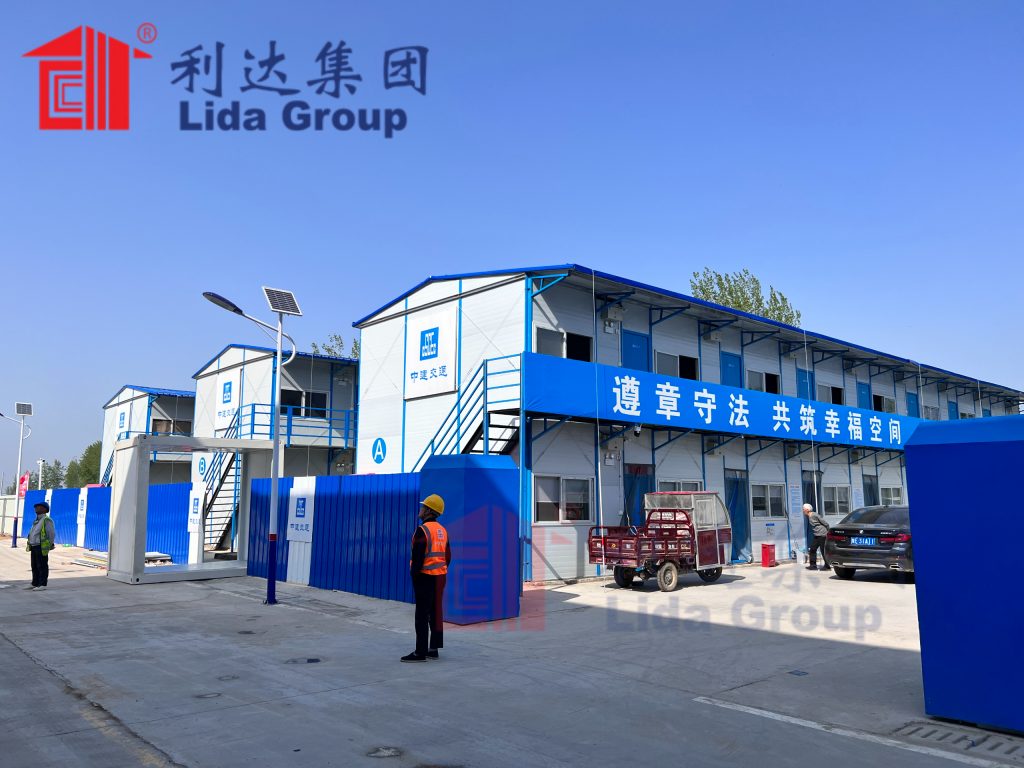
5. Applications of Arctic-Grade Temporary Prefab Buildings
5.1 Scientific Research Stations
Arctic research stations require reliable and comfortable housing for scientists and support staff who spend extended periods in the region. Lida Group’s prefab buildings provide an ideal solution, offering a controlled environment for living and working. The superior insulation ensures that laboratory equipment, which is often sensitive to temperature fluctuations, remains functional.
The modular design allows for the creation of specialized spaces, such as laboratories, dormitories, and common areas, all within a compact and efficient footprint. The rapid deployment means that research stations can be set up quickly, allowing scientists to begin their work without delay.
5.2 Mining and Resource Exploration Camps
The Arctic is rich in natural resources, including oil, gas, and minerals, leading to increased mining and exploration activities. These operations require temporary housing for workers, often in remote and inaccessible locations. Lida Group’s prefab buildings can be quickly deployed to create comfortable living quarters, dining facilities, and recreational areas for mining personnel.
The durability of the buildings ensures that they can withstand the harsh conditions of mining sites, while the energy efficiency helps to reduce operational costs. The modular design also allows for easy expansion or relocation as the mining operation evolves.
5.3 Emergency Response and Rescue Operations
In the event of natural disasters, such as ice storms or oil spills, emergency response teams require temporary shelters to base their operations. Lida Group’s Arctic-grade prefab buildings can be rapidly transported to the disaster site and assembled to provide accommodation, command centers, and medical facilities.
The buildings’ ability to withstand extreme weather ensures that they remain operational even in the most challenging conditions, providing a safe haven for rescue workers and those affected by the disaster.
5.4 Military and Defense Outposts
Military forces operating in the Arctic require secure and functional facilities for personnel and equipment. Lida Group’s temporary prefab buildings can be used to create outposts, barracks, and storage facilities that are resistant to extreme weather and capable of withstanding potential threats.
The modular design allows for quick deployment and reconfiguration, making them suitable for dynamic military operations. The buildings’ durability and low maintenance requirements ensure that they can operate effectively in remote Arctic locations with limited supply lines.

6. Environmental Considerations
6.1 Energy Efficiency and Reduced Carbon Footprint
Lida Group’s Arctic-grade temporary prefab buildings are designed with energy efficiency in mind. The superior insulation provided by the sandwich panels reduces the need for excessive heating, resulting in lower energy consumption. This not only reduces operational costs but also minimizes the carbon footprint of the buildings, as less fossil fuel is burned for heating.
In addition, the buildings can be integrated with renewable energy sources, such as solar panels or wind turbines, to further reduce their reliance on non-renewable energy. This makes them a more sustainable option for Arctic operations, where minimizing environmental impact is crucial.
6.2 Sustainable Materials and Construction
The company is committed to using sustainable materials in the production of its sandwich panels and prefab buildings. Many of the materials used, such as recycled steel and insulation made from renewable resources, are environmentally friendly. The factory-based manufacturing process also reduces waste compared to traditional on-site construction, as materials are precisely cut and used efficiently.
Lida Group also ensures that its manufacturing facilities operate in an environmentally responsible manner, with measures in place to reduce emissions, conserve water, and manage waste.
6.3 Minimal Impact on Arctic Ecosystems
The modular and temporary nature of the buildings means that they have minimal impact on the fragile Arctic ecosystems. Unlike traditional construction, which can disrupt the landscape and damage wildlife habitats, the prefab buildings can be installed with minimal ground disturbance.
When the buildings are no longer needed, they can be disassembled and removed, leaving little trace of their presence. This is particularly important in protected Arctic areas, where preserving the natural environment is a priority.
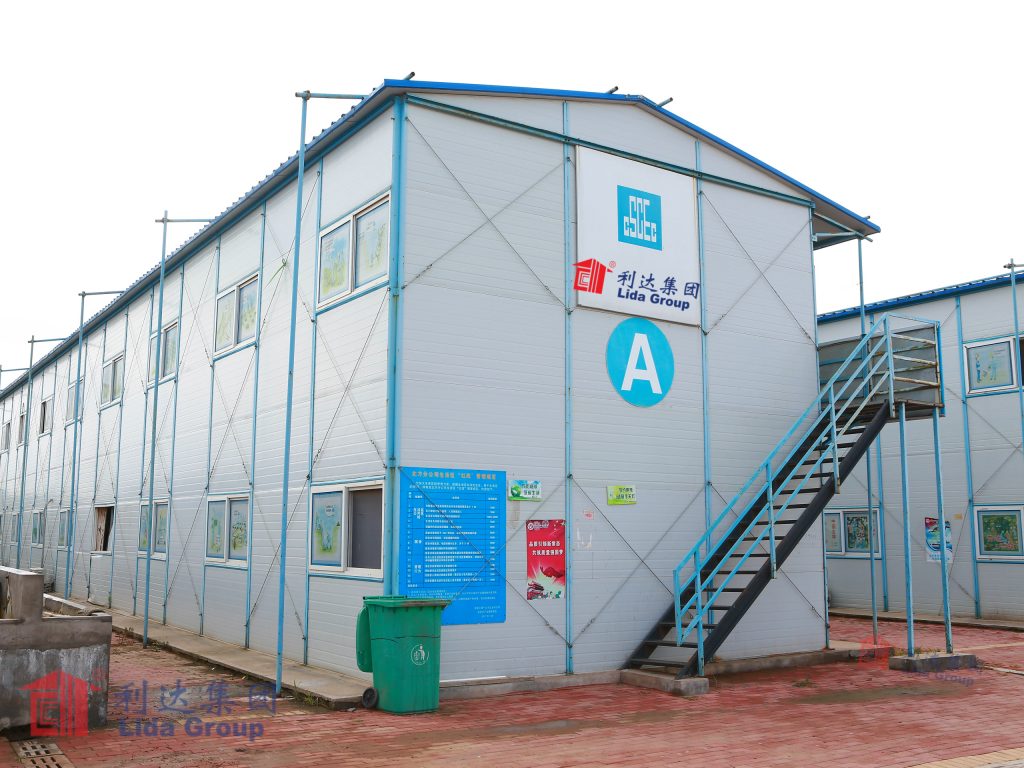
7. Case Studies: Successful Deployments in Arctic Regions
7.1 Research Station in Svalbard
A prominent example of Lida Group’s Arctic-grade prefab buildings in action is a research station located in Svalbard, a Norwegian archipelago in the Arctic Ocean. The station, which houses a team of scientists conducting climate research, required a durable and energy-efficient facility capable of withstanding temperatures as low as -50°C (-58°F) and strong polar winds.
Lida Group’s modular buildings were chosen for their rapid deployment and superior thermal performance. The insulated sandwich panels ensured that the interior temperature remained stable, even in extreme cold, while the wind and snow load resistance protected the structure during winter storms. The station’s modular design allowed for the inclusion of laboratories, dormitories, and a communal kitchen, all of which were assembled in just a few weeks.
The scientists living and working at the station have reported high levels of comfort, with the buildings maintaining a consistent temperature and providing a safe and functional environment for their research. The energy efficiency of the buildings has also reduced the station’s reliance on diesel generators, lowering operational costs and environmental impact.
7.2 Mining Camp in Northern Canada
In northern Canada, a mining company required temporary accommodation for over 200 workers at a remote diamond mining site. The harsh Arctic conditions, including extreme cold and heavy snowfall, made traditional construction impractical. Lida Group’s prefab buildings were selected to meet the company’s needs.
The modular buildings were transported to the site via ice roads during the winter months, when transportation is feasible. Once on-site, the buildings were assembled quickly, creating a fully functional camp with dormitories, dining halls, and recreational facilities. The insulated sandwich panels provided excellent thermal insulation, reducing heating costs, while the wind and snow load resistance ensured the safety of the workers during winter storms.
The mining company reported that the prefab buildings exceeded their expectations, providing a comfortable living environment for the workers and withstanding the harsh Arctic conditions with minimal maintenance. The modular design also allowed for easy expansion of the camp as the mining operation grew.
7.3 Emergency Shelter in Alaska
Following a severe ice storm in Alaska that left several communities without power and shelter, Lida Group’s Arctic-grade prefab buildings were deployed as emergency shelters. The storm caused extensive damage to local infrastructure, making it difficult to provide traditional housing for the affected residents.
The rapid deployment capability of the prefab buildings was crucial, with the first shelters arriving within days of the storm. The buildings were assembled quickly, providing warm and safe accommodation for families displaced by the storm. The superior insulation kept the interior warm even as temperatures dropped below -30°C (-22°F), while the water-resistant panels protected against the melting ice and snow.
Local authorities praised the durability and functionality of the shelters, noting that they provided a much-needed sense of stability for the affected communities during the recovery effort. The modular design also allowed for the shelters to be easily relocated once permanent housing was restored.
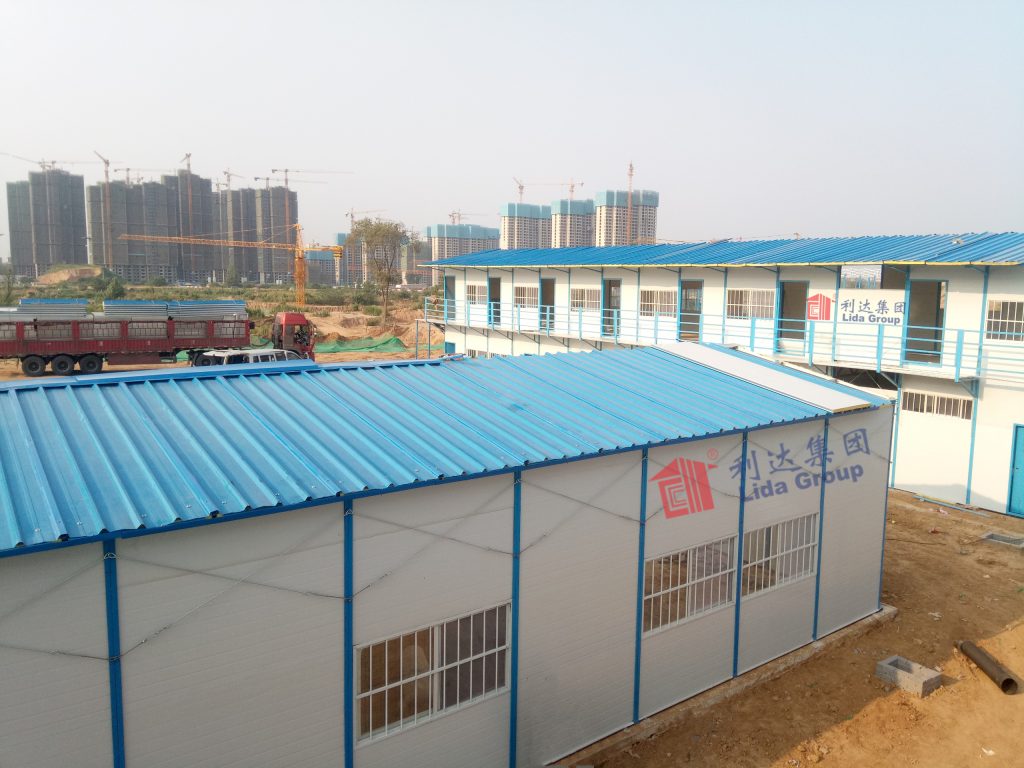
8. Challenges and Innovations in Arctic Prefab Construction
8.1 Transportation and Logistics in Remote Areas
Transporting prefab components to remote Arctic locations remains a significant challenge. The lack of infrastructure and harsh weather conditions can make transportation difficult and unpredictable. Lida Group has addressed this by developing lightweight and compact modular components that can be transported by various means, including cargo planes, helicopters, and ice roads.
The company also works closely with local logistics providers to plan transportation routes and schedules, taking into account seasonal variations and weather conditions. In some cases, components are pre-positioned in strategic locations during the summer months, when transportation is easier, to ensure they are available when needed during the winter.
8.2 Ensuring Long-Term Durability in Extreme Conditions
While Lida Group’s prefab buildings are designed to withstand extreme Arctic conditions, ensuring long-term durability remains an ongoing challenge. The constant exposure to cold, wind, and moisture can take a toll on building materials over time. To address this, the company invests in ongoing research and development to improve the durability of its sandwich panels and other components.
This includes testing new materials and coatings that offer enhanced resistance to corrosion, UV radiation, and extreme temperature fluctuations. The company also provides regular maintenance guidelines and support to ensure that the buildings are properly cared for, maximizing their lifespan.
8.3 Integration with Renewable Energy Systems
Integrating prefab buildings with renewable energy systems in the Arctic can be challenging due to the region’s limited sunlight during winter months and variable wind conditions. However, Lida Group is exploring innovative solutions to overcome this, such as the development of solar panels optimized for low-light conditions and small-scale wind turbines designed to withstand Arctic winds.
The company is also working on energy storage systems that can store excess energy generated during the summer months for use in winter. This would reduce the reliance on diesel generators and make the buildings more self-sufficient and sustainable.
8.4 Adapting to Changing Arctic Climate
The Arctic climate is changing, with rising temperatures and changing weather patterns. This presents new challenges for prefab construction, as buildings must now withstand not only extreme cold but also more frequent thawing and freezing cycles, which can affect permafrost stability.
Lida Group is responding to these changes by developing more flexible foundation systems that can adapt to ground movement caused by permafrost thaw. The company is also researching new insulation materials that can perform effectively across a wider range of temperatures and humidity levels. By staying ahead of climate trends, Lida Group aims to ensure that its Arctic-grade buildings remain effective and reliable in a changing environment.
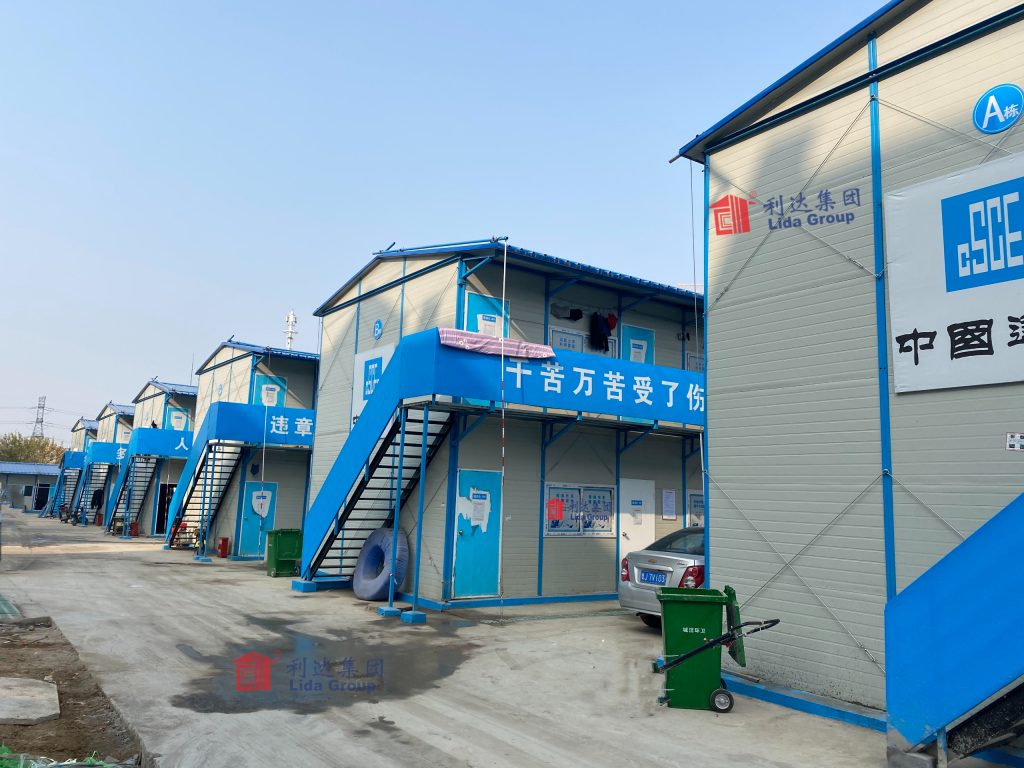
9. Impact on the Arctic Construction Industry
9.1 Redefining Standards for Extreme Environment Housing
Lida Group’s Arctic-grade temporary prefab buildings have redefined the standards for housing in extreme Arctic environments. Traditional construction methods, which were once the only option, are now being replaced by these innovative prefab solutions, thanks to their superior performance, efficiency, and sustainability.
The company’s success has set a new benchmark for what is possible in Arctic construction, inspiring other manufacturers and developers to invest in research and development of similar technologies. This has led to increased competition in the market, driving further innovation and improvements in the quality and performance of Arctic housing solutions.
9.2 Enabling Economic Activities in Remote Arctic Regions
The availability of reliable and durable temporary housing has opened up new possibilities for economic activities in remote Arctic regions. Mining companies, for example, can now establish operations in areas that were previously inaccessible due to the lack of suitable housing for workers. This has led to increased exploration and extraction of natural resources, contributing to economic growth in these regions.
Scientific research in the Arctic has also been enhanced, as researchers can now live and work in comfortable and functional facilities for extended periods. This has led to a better understanding of the Arctic ecosystem and climate, which is crucial for addressing global environmental challenges.
9.3 Facilitating International Collaboration
The deployment of Lida Group’s prefab buildings in Arctic regions has facilitated international collaboration in various fields. Research stations, for example, often host scientists from different countries, working together on joint research projects. The modular and flexible design of the buildings allows for easy expansion and customization to meet the needs of international teams.
In addition, the company’s global presence and experience in working with international clients have enabled it to share its expertise and knowledge with partners around the world, promoting best practices in Arctic construction and sustainable development.
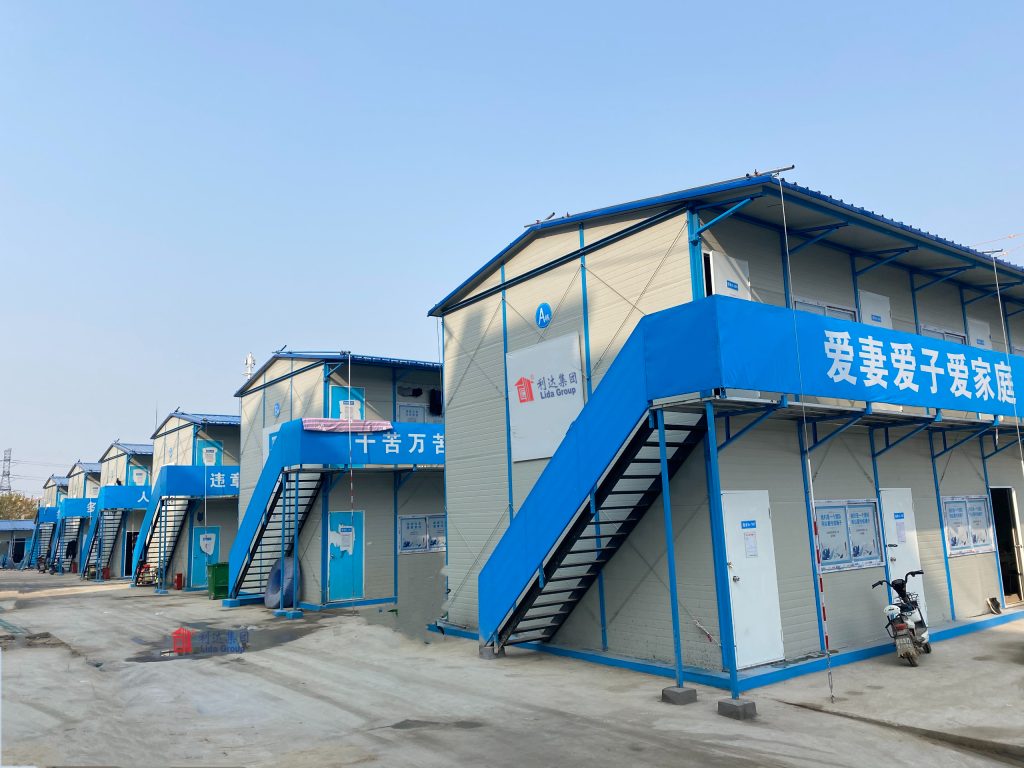
10. Future Outlook and Developments
10.1 Advancements in Material Science
The future of Arctic-grade prefab buildings will see significant advancements in material science. Lida Group is investing in the development of new insulation materials with even higher R-values, allowing for better thermal performance in extreme cold. These materials may include aerogels, which are highly porous and offer exceptional insulation properties, or advanced composites that combine the benefits of different materials.
In addition, research is being conducted on self-healing materials that can repair damage caused by extreme weather conditions, increasing the durability and lifespan of the buildings. These advancements in material science will further enhance the performance and sustainability of Arctic prefab buildings.
10.2 Smart Building Technologies
The integration of smart building technologies is another area of focus for Lida Group. Smart sensors can be installed in the buildings to monitor temperature, humidity, structural integrity, and energy consumption in real-time. This data can be transmitted to a central control system, allowing for remote monitoring and management of the buildings.
Smart heating and cooling systems can be optimized based on occupancy and external weather conditions, reducing energy consumption and improving comfort. In addition, smart security systems can enhance the safety of the buildings, particularly in remote locations.
10.3 Expansion of Applications
As the technology continues to evolve, the applications of Arctic-grade prefab buildings are expected to expand. Beyond research stations, mining camps, emergency shelters, and military outposts, these buildings could be used for tourism, as more people seek to explore the Arctic region. They could also be used for infrastructure projects, such as temporary offices and storage facilities for road and pipeline construction.
The modular design of the buildings makes them suitable for a wide range of applications, and their rapid deployment capability ensures that they can meet the needs of various industries in a timely manner.
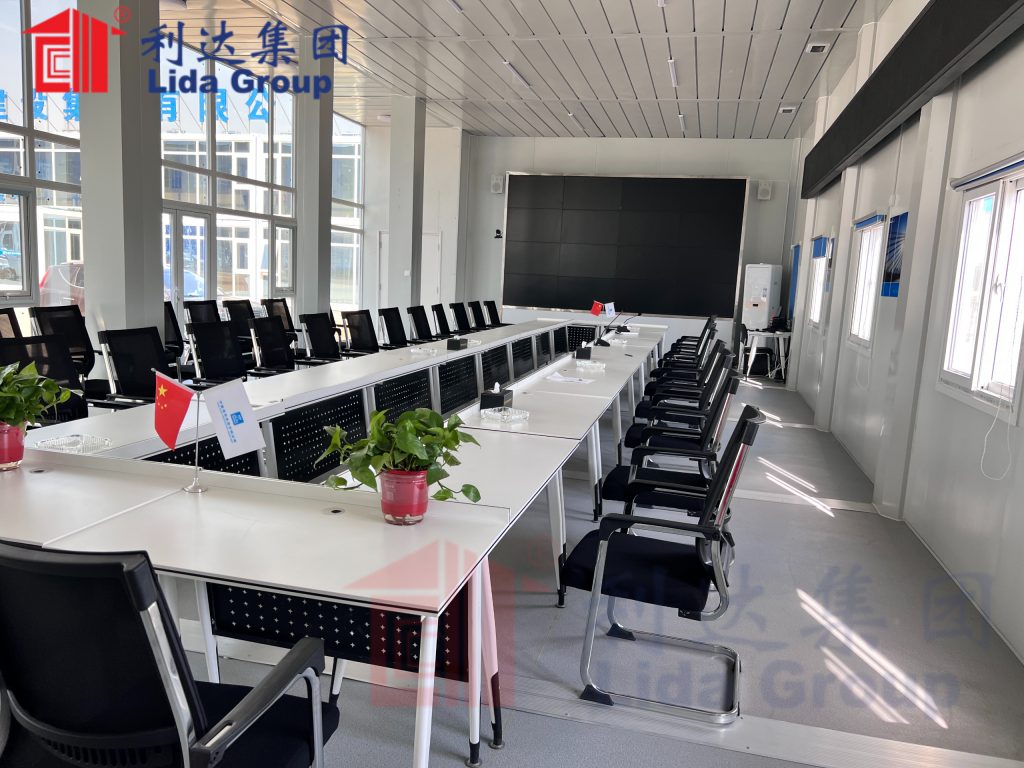
11. Conclusion
Lida Group’s Arctic-grade temporary prefab buildings, featuring insulated sandwich panels, represent a significant innovation in extreme mobile housing. These structures are specifically designed to overcome the unique challenges of the Arctic environment, including extreme cold, harsh weather, remote locations, and permafrost.
The key features of these buildings, such as superior thermal insulation, wind and snow load resistance, rapid deployment, and adaptability to permafrost, make them an ideal solution for a wide range of applications, from scientific research stations and mining camps to emergency shelters and military outposts. The use of sustainable materials and energy-efficient design also ensures that they have minimal impact on the fragile Arctic ecosystem.
Through successful deployments in regions like Svalbard, northern Canada, and Alaska, Lida Group has demonstrated the effectiveness and reliability of its Arctic-grade prefab buildings. The company’s ongoing research and development efforts to address challenges such as transportation, long-term durability, integration with renewable energy, and adaptation to climate change are ensuring that these buildings continue to evolve and improve.
The impact of Lida Group’s innovation on the Arctic construction industry is significant, redefining standards and enabling economic activities and international collaboration in remote regions. As material science and smart building technologies advance, the future of Arctic-grade prefab buildings looks promising, with expanded applications and even better performance.
In conclusion, Lida Group’s Arctic-grade temporary prefab buildings with insulated sandwich panels are a game-changer for extreme mobile housing in the Arctic. They provide a safe, comfortable, and sustainable solution that meets the demands of the region’s harsh environment, contributing to the development and well-being of Arctic communities and the advancement of scientific research and economic activities.

Related news
-
Future-Proof Workforce Housing: Lida Group's High Quality Container Villages Feature Scalable Prefab Construction for Mega-Projects
2025-07-30 15:58:40
-
Lida Group Transforms Disaster Response with High Quality Mobile Houses Using Rapid Prefab Sandwich Panel Construction
2025-08-05 15:50:25
-
Smart Temp Communities: Lida Group Integrates IoT Systems into Temporary Container Buildings via Prefab Construction Networks
2025-07-30 15:15:25
contact us
- Tel: +86-532-88966982
- Whatsapp: +86-13793209022
- E-mail: sales@lidajituan.com


